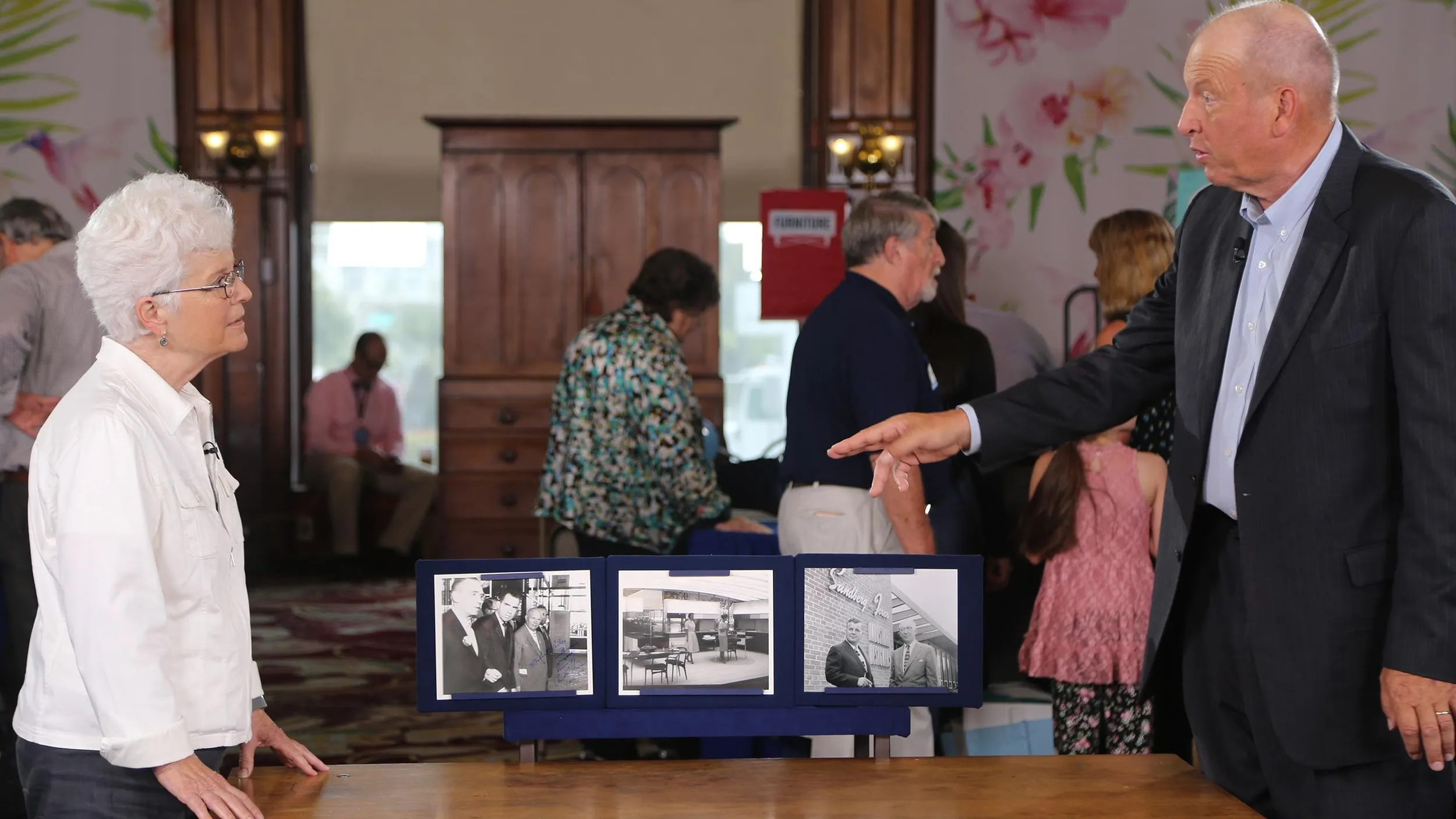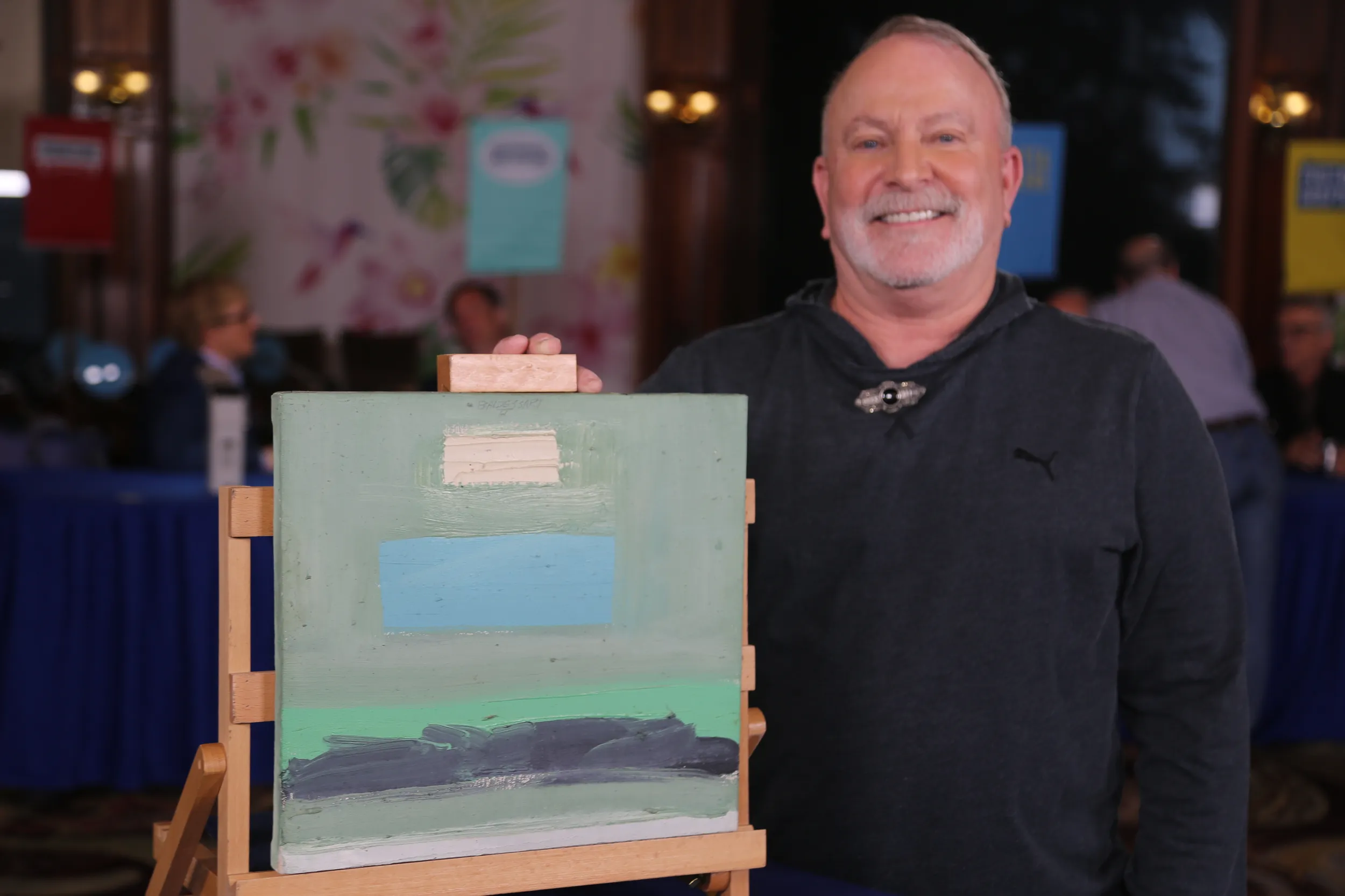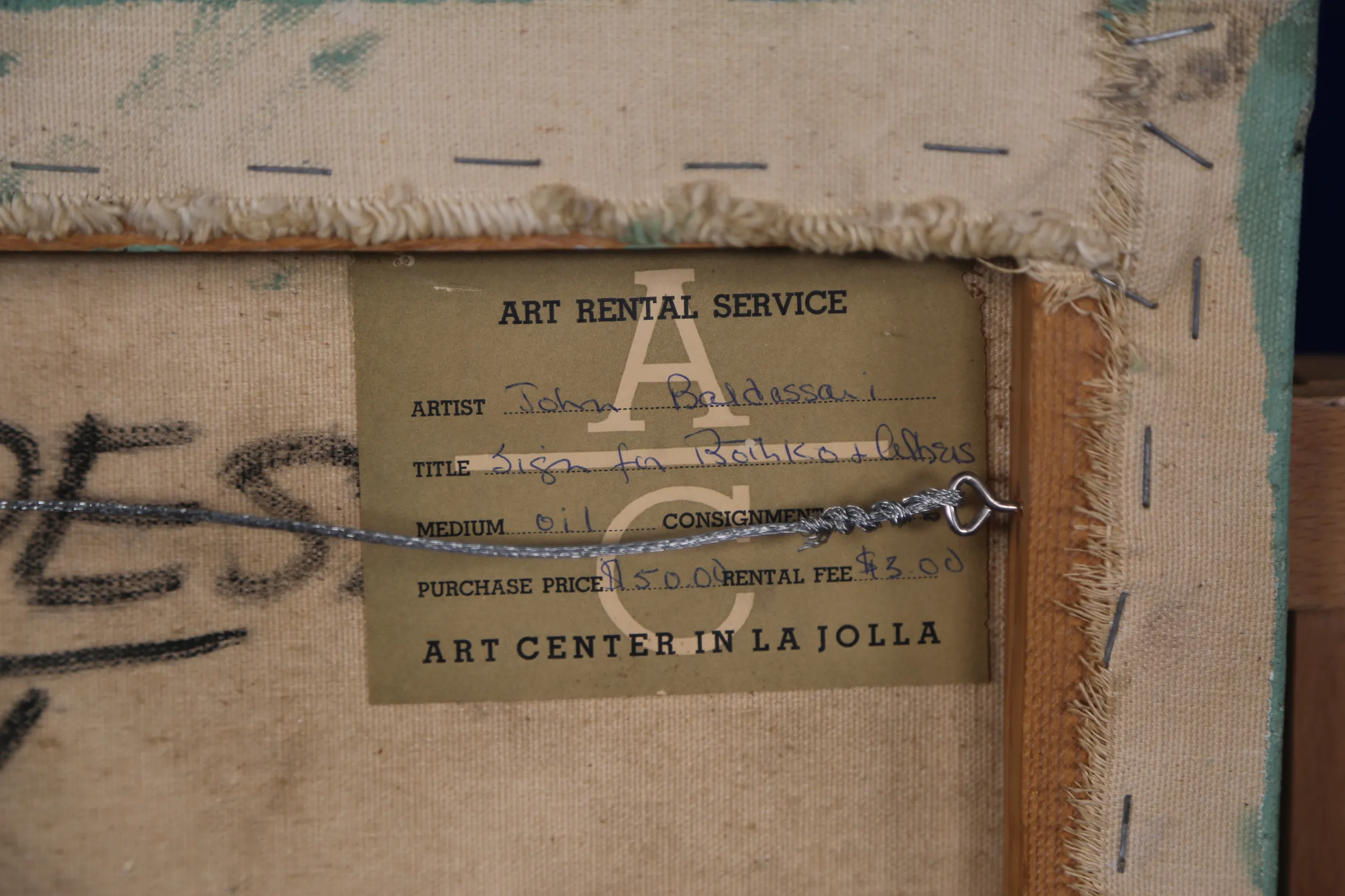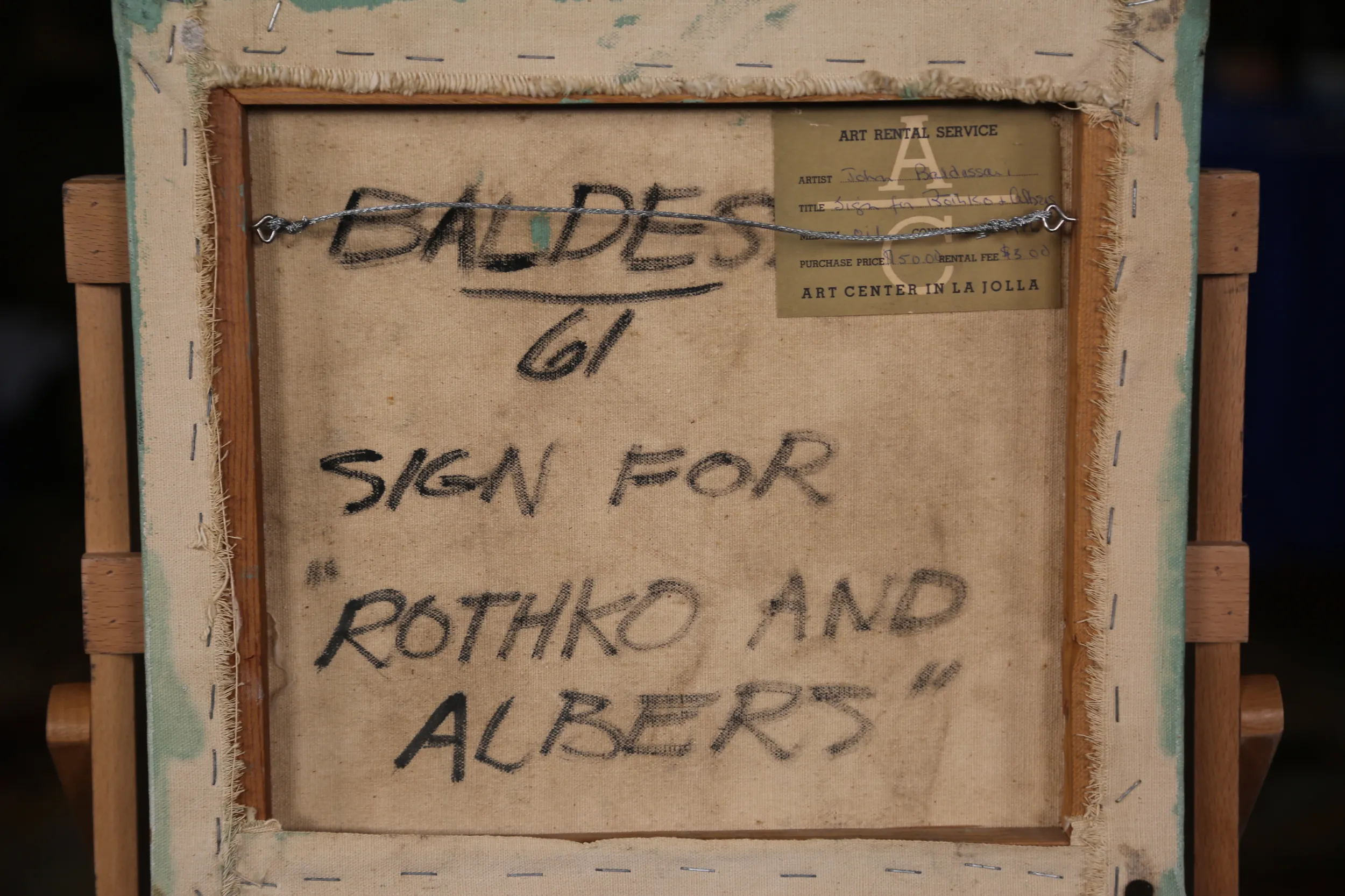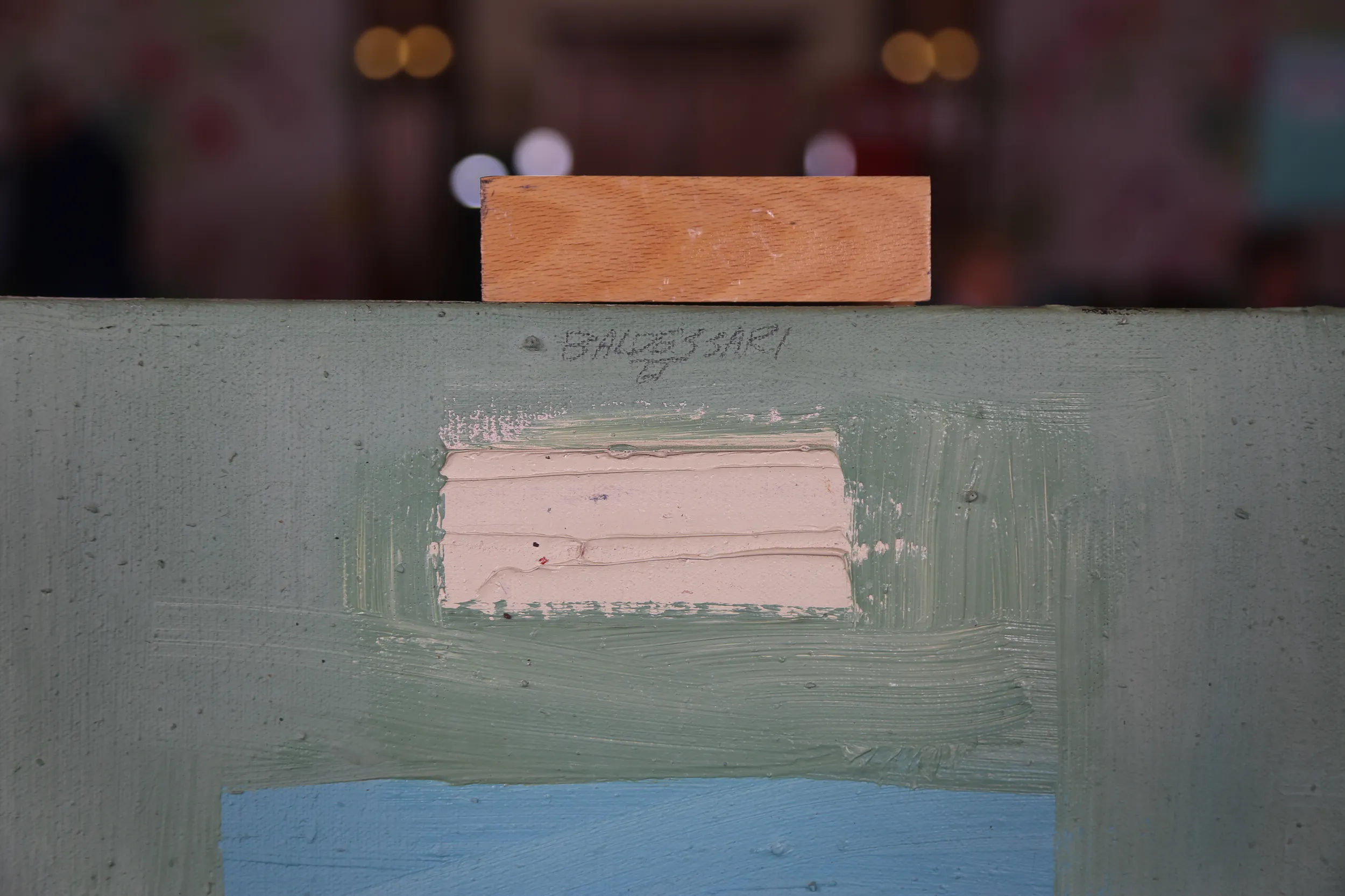GUEST: John Baldessari has been painting for a long time, and my understanding is that there was a time that he burned a lot of his paintings to make cookies and to use in other parts of his art. And this, I believe, was from that era. And the only other thing I know about it is that there's a tag in the back that you could rent it from the La Jolla Museum of Art, by the month. And if you liked it, after a year, you could buy it. And I found that terribly interesting. But other than that, I really haven't researched John that much. I know that he's changed his styles a lot.
APPRAISER: He has. And today he's considered probably one of the most important living contemporary artists. He was profoundly influential on several generations of young artists who are working today. He taught in San Diego and taught in Los Angeles for many years. And in fact, he was born and raised in National City.
GUEST: Yes.
APPRAISER: Which is right across the bay here, just a few minutes away from where we're taping today. He very famously proclaimed in 1971, "I will no longer make any boring art." And it was around the time period that people were starting to understand how important he was to the idea of conceptual art in today's art market. Some of his early shows in the late '60s are among some of the most important works and can sell in the many millions of dollars. The works from the early '60s, of which this is one...
GUEST: Right.
APPRAISER: ...are very scarce, because he destroyed much of that work shortly before he made that very public statement that he didn't want to make any more boring art, thereby, sort of saying that his earlier work to him was boring. Ironically, that has made those works very scarce, and because he went on to become so vitally important to the contemporary art world, these works have now become very valuable. And in fact, he's now including these paintings in his catalogue raisonné, and there are very few of them left. So only the works that were not in his possession-- that were either sold or in museums, sort of thing-- exist today. So it's very rare to see one of these paintings. This example has a really beautiful title. The title is called, "Sign for Rothko and Albers." Rothko and Albers were two giants of the paintings movement. And at the time he painted this, there was no expectation that Baldessari would ever rise to their level, but he is now considered one of, one of the kind of critical influencers of the contemporary art world.
GUEST: Wow.
APPRAISER: The work is oil on canvas, and this is actually a work that he painted himself. Now, that may sound silly to point that out, but by the end of the '60s, he sort of stopped painting on canvas, and he had a very famous show in 1968 where he hired a sign painter to simply paint the artworks for him.
GUEST: Oh.
APPRAISER: So he told the sign painter what to paint, and the sign painter painted the work, and then he signed it and put it up in the gallery, saying, "This is my painting." And it caused quite an uproar.
GUEST: I didn't know that.
APPRAISER: Because people were saying, "Well, wait a minute. You didn't paint them." And he says, "This is not about who painted it. It's my concept." And conceptually, it really opened the door to let a lot of artists take liberties in the, in the art world, of saying, "This is not about what I actually do with my brush. It's about what I'm doing with my mind."
GUEST: Ah.
APPRAISER: But let's take a look at the label on, on the back.
GUEST: Yeah.
APPRAISER: Here's the label in the upper corner that's actually affixed to the back of the canvas. Signed, "Baldessari, '61." And then, "Sign for Rothko and Albers." And it says that you could rent it for three dollars a month.
GUEST: Yeah.
APPRAISER: I bet that someone did pay the three dollars a month and then brought it back, and eventually, the Art Center in La Jolla sold it.
GUEST: Mm-hmm.
APPRAISER: Do you know how it got sold originally?
GUEST: I don't, I don't. I, I thought it was the original people that had rented it for a year.
APPRAISER: Uh-huh.
GUEST: And then I thought they had bought it. But I, I really don't know.
APPRAISER: And how did you acquire it?
GUEST: Through an art seller, a friend of ours, actually. She acquired it...
APPRAISER: And how long ago?
GUEST: Eight years ago, about eight years ago, yeah. Eight years.
APPRAISER: Eight years ago, this would have been a pretty valuable painting. How much did you pay for it eight years ago?
GUEST: I think it was $25,000.
APPRAISER: $25,000.
GUEST: Yes.
APPRAISER: So that's a lot of money.
GUEST: Yeah.
APPRAISER: To pay for a contemporary artwork.
GUEST: Absolutely.
APPRAISER: Well, you'll probably be very happy to know that today, I would put a retail replacement value of about $90,000.
GUEST: Wow! Oh, that's great!
APPRAISER: And I think that's maybe a little on the conservative side.
GUEST: Great, that's great!

